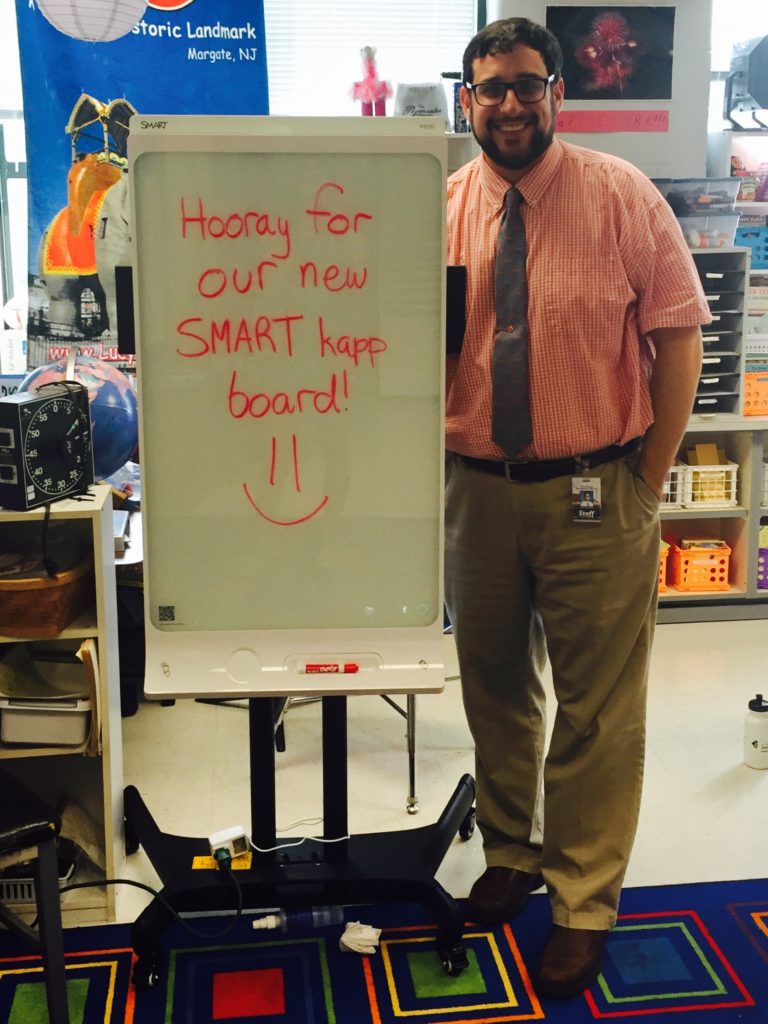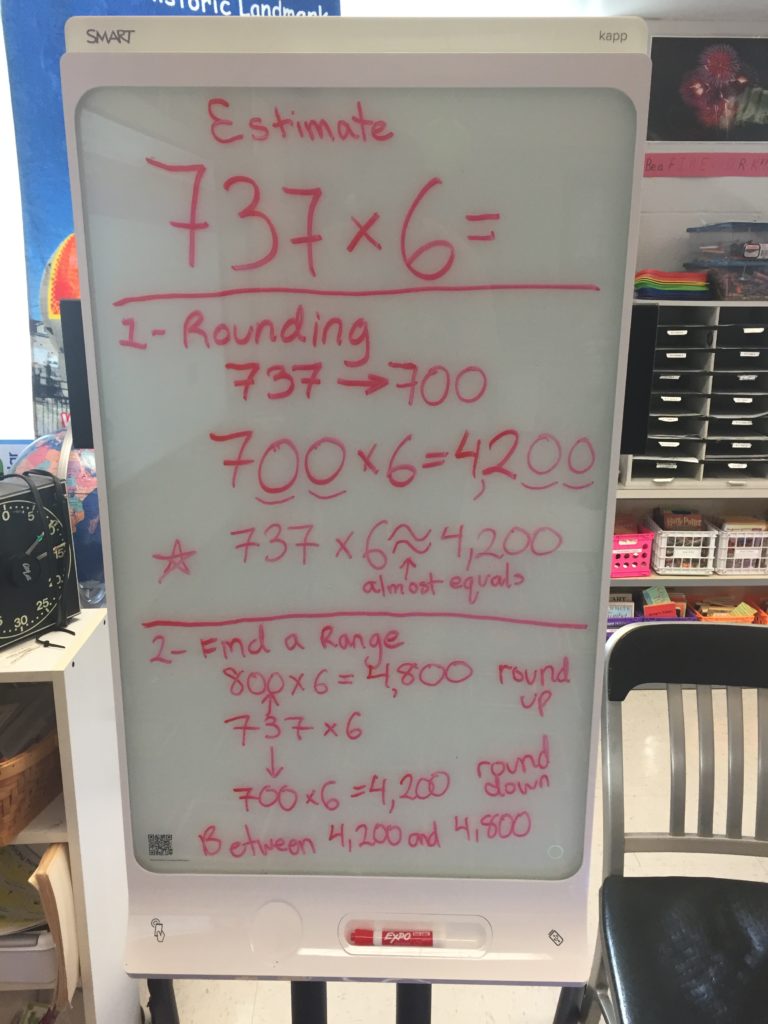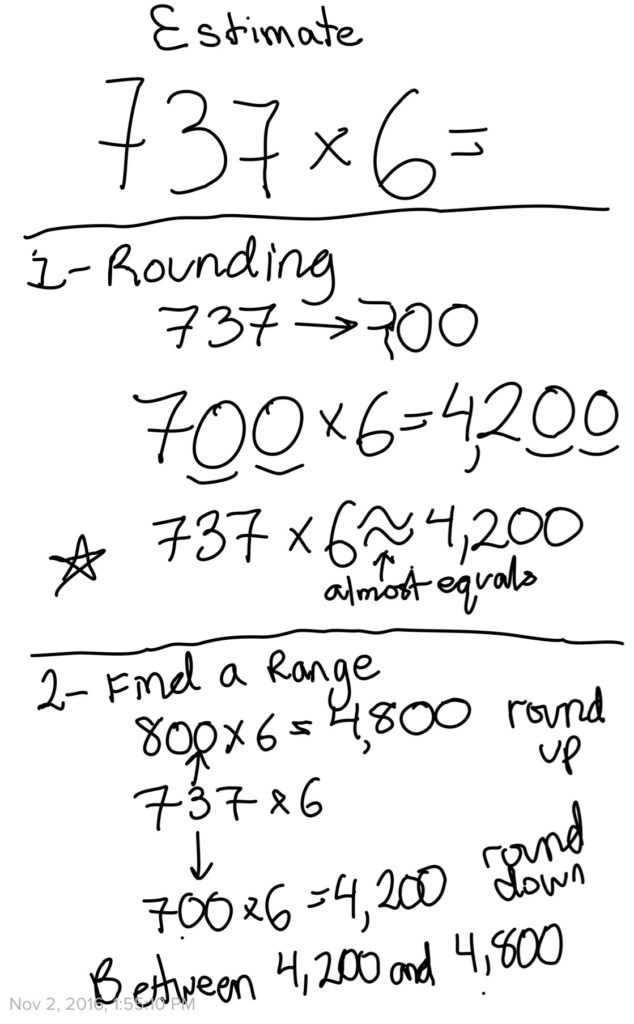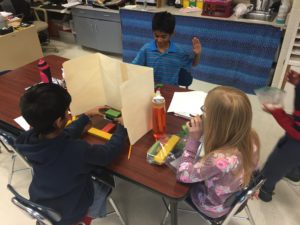Viewing: homework
October 26, 2021
Homework: A chance to build responsibility!
In fourth grade, homework serves two important purposes: It’s an opportunity to practice skills learned in class or to set the stage for new learning, and it also gives students an opportunity to develop the skills of being responsible for managing their assignments. In this post, I’ll review homework expectations in case you weren’t able to join us for curriculum night in September. (I think it’s relevant now that we’re “in the swing” of homework in class.)
What does a typical homework assignment look like?
As you’ve probably seen, most homework assignments are assigned toward the beginning of the week and are due later in the week. Typically there are up to two written assignments per week. One is usually a math assignment and gives students the opportunity to review different skills they learned the prior week. The second assignment could be a reading activity, a writing task, or even an assignment tied to social studies, science, social-emotional learning, etc. Additionally, students should dedicate about 30 minutes to independent reading each night, as well as nightly time to practice their basic math facts. (More on these last two items in a future post.)
How does my child know what’s for homework? (And how do I know?)
Whenever I assign a homework task (again, usually on a Monday or Tuesday, though there are exceptions), students copy the assignment from the board into their planners. (It’s important that they bring their planners each day.) They should be copying down the name of the assignment AND the due date in their planners. I try to make it around the room to check to make sure that students are accurately copying down the assignments. I do not have students write down the assignments of the 30(ish) minutes of nightly reading and the nightly math fact practice, as these are ALWAYS homework assignments. But I remind them that, just because it’s not written, they shouldn’t think it’s not expected.
Families sometimes ask me if I can post the homework assignments online. This is something that I purposefully don’t do. As students get older, their teachers will most likely post the homework assignments online for them, particularly as more and more assignments are completed online. But in elementary school, we see this as an opportunity to help kids develop the skills to responsibility copy their homework assignments into their planner, make sure they take home needed worksheets from their mailboxes, etc.
What if my fourth grader doesn’t have his or her homework on-time?
It happens! Who among us hasn’t missed a deadline on occasion? If your child doesn’t have his or her homework assignment ready on the due date, he or she will complete a homework alert, which is a letter home outlining what assignments were missing, why they weren’t ready, and what his or her plan is to get homework done in the future. Please sign it and send it back to school. We started using these in class last week, so several of you may have seen these come home. Please know that if one of these comes home, it’s NOT time to panic! As I said, this is a NORMAL part of being a developing student. Mistakes happen. If it becomes a habit, I’ll reach out to you to discuss how to best support your fourth grader. (Please note that homework is due in the morning, when they arrive at school. There’s no need to drive in and drop off worksheets left at home. It’s not because I’m looking to be extra tough on the kids, but rather, because it takes away a valuable opportunity for your fourth grader to have an experience that might help them to develop their personal organization skills or time management skills. I’m eager to work with your child to improve these areas, and my goal is never to simply penalize or embarrass a student.)
How can I help my fourth grader with homework?
I welcome your involvement when it comes to supporting your child with homework. If your child is struggling with their work, ESPECIALLY math homework, please encourage him or her to email me. (Again, I want students to learn to be good self-advocates when it comes to seeking out help.) I often have instructional videos and guides that I can send out to help with homework, so please ask! (Even if I don’t have a resource for you, I’m happy to work with your child in class. Plus, Google can be a good resource! :-D) If you’re finding that your child is regularly struggling with work, please let me know! I want to work with you to make homework a VALUABLE part of the learning process.
If you ever have questions about homework, please don’t hesitate to ask me!
Posted in Class Updates|By Jon Moss
September 24, 2018
Starting Homework
Hello, families! Today, we’re kicking off our homework routines. They’re quite a bit different from past years, but I strongly believe we’re improving the learning process for kids in making these changes. Each week, students will receive a single math assignment. It is intended to be completed over multiple nights and will cover a variety of topics that we’ve taught in prior weeks. The idea is that the concepts on the homework aren’t BRAND new and, instead, are ones with which students have had a good amount of practice. (We all know how frustrating it is for students – and families – when they bring home a worksheet based on the day’s challenging lesson, and come home thoroughly baffled! That doesn’t help anyone! By basing the week’s homework on past weeks’ skills, ones they’ve practiced and applied, I’m hopeful that students will feel more confident and proficient.) When there’s something on the homework that I expect will be unfamiliar to parents, I will do my best to send out a video to help families understand the strategy we’re using in class. Tonight, for example, you’ll see two items that involve renaming numbers. (2,900 = __ hundreds, for example.) Here is a pair of videos to bring you up to speed on the strategy I’ve taught students.
Homework for reading and writing will take more of a varied form. Sometimes, it will be an activity directly tied to a skill we’re working on in class. For example, this week, students will be asked to keep track of the thoughts they have as they read. (We’ve been working on this a lot in class.) Other times, students will be given an assignment tied to the book they’re reading at home. Or their homework may set the groundwork for an upcoming lesson.
Remember, students always have free-choice reading for homework (around 30 minutes), and they should always take time to practice those often-elusive math facts. Stay tuned for ideas on both of these responsibilities.
If you ever have any questions about homework or anything else, please feel free to contact me!
Posted in Class Updates|By Jon Moss
November 2, 2016
What’s New in November?
As much as I love watching the fall foliage in October, I must admit that I am relieved that it’s over! Two district curriculum meetings, one conference presentation, 26 DRAs (and counting), and plenty of other projects made October a productive but exhausting month! As I dig out from the month that seemingly never ended, I’m looking forward and am excited to share three new things happening in our classroom!
 Last Tuesday, I presented at the 2016 CECA/CASL conference about how to integrate collaborative eLearning into classroom instruction. (If you’re interested in learning more about my conference presentation, visit my Teachers and Technology link up top, or click here.) I think it was my lucky day, as I ended up leaving with a new document camera for our classroom and an interactive whiteboard setup (evaluation products from a vendor we’ve used in the past), and a bag of books from a raffle. But my big win was being randomly chosen to receive a “SMART kapp” board for our classroom! SMART kapp is a dry erase board that can capture a snapshot of what’s written on it. By pairing it with my phone, I’m able to take what’s written and upload it to Google Drive (to share in Google Classroom), save it as a PDF or JPG image, and more. I’m excited by its potential to let me share notes from class with students and families in order to support homework. After ordering and assembling a stand, I was excited to try it out today for the first time, and so far, I’m impressed! We used it for a math lesson today, and I uploaded our notes to Google Classroom for the students to use this evening. It’s still new, so we’ll see how it best helps us in class, but I welcome and appreciate your feedback! Here’s a sample of how it looks in real and recorded images:
Last Tuesday, I presented at the 2016 CECA/CASL conference about how to integrate collaborative eLearning into classroom instruction. (If you’re interested in learning more about my conference presentation, visit my Teachers and Technology link up top, or click here.) I think it was my lucky day, as I ended up leaving with a new document camera for our classroom and an interactive whiteboard setup (evaluation products from a vendor we’ve used in the past), and a bag of books from a raffle. But my big win was being randomly chosen to receive a “SMART kapp” board for our classroom! SMART kapp is a dry erase board that can capture a snapshot of what’s written on it. By pairing it with my phone, I’m able to take what’s written and upload it to Google Drive (to share in Google Classroom), save it as a PDF or JPG image, and more. I’m excited by its potential to let me share notes from class with students and families in order to support homework. After ordering and assembling a stand, I was excited to try it out today for the first time, and so far, I’m impressed! We used it for a math lesson today, and I uploaded our notes to Google Classroom for the students to use this evening. It’s still new, so we’ll see how it best helps us in class, but I welcome and appreciate your feedback! Here’s a sample of how it looks in real and recorded images:
Our second “New in November” item is math rotations. This may be familiar to you from third grade. Traditional math lessons take about 60 minutes and may be comprised of 40 minutes of whole class  instruction and 20 minutes of independent or small group practice. What’s tough about that is that in that 40 minutes, there are students who are ready to move on after 10 minutes, and students who need more support beyond what was already taught. At PGS, we’re working to be more responsive to student needs, so we use math stations to better differentiate our instruction. The whole class lesson is shorter, only 15 or 20 minutes, and then students split up into assigned groups for math rotations. Students visit four stations in a given day: the teacher station (for small group, customized instruction about the skill I introduced in the minilesson), the practice station (for practice with that same skill), the hands-on station (where there is a game or other fun activity to let students reinforce various math skills), and the fluency station (where students work to maintain their computational fluency – aka adding and subtracting and later, multiplying and dividing).
instruction and 20 minutes of independent or small group practice. What’s tough about that is that in that 40 minutes, there are students who are ready to move on after 10 minutes, and students who need more support beyond what was already taught. At PGS, we’re working to be more responsive to student needs, so we use math stations to better differentiate our instruction. The whole class lesson is shorter, only 15 or 20 minutes, and then students split up into assigned groups for math rotations. Students visit four stations in a given day: the teacher station (for small group, customized instruction about the skill I introduced in the minilesson), the practice station (for practice with that same skill), the hands-on station (where there is a game or other fun activity to let students reinforce various math skills), and the fluency station (where students work to maintain their computational fluency – aka adding and subtracting and later, multiplying and dividing).
There is a set order for these rotations, so for many students, they’re having a 15 or 20 minute minilesson, immediately followed by a 10(ish) minute small group session to work on the same skill. This seems like less time, but the small group setting means that I can provide targeted instruction to students in a more meaningful, efficient way. Other students will see me after visiting one or two or three other stations, but this model ensures that everyone gets the support that he or she needs. Please understand that there are days in which we may not have math rotations, often when we’re introducing a new skill that warrants more time for whole class instruction.
Our final “New in November” is a shift in our class’ conduct system. For the first few weeks of school, groups competed to earn points, and the group with the most points on Friday would earn a few minutes of free time. This works well, and while the friendly competition generally stayed friendly, I wanted to raise the bar for the students. Starting this month, we’re shifting to a cooperative model. Groups are still working to earn points for their team, and we may still have the winning group receive their prize, but the class is working toward a larger goal, too. When ALL the groups have earned 50 points (each), the class will earn a theme day, such as pajama day, 80’s day, etc. That means that in addition to students within a group helping their teammates to make good choices, we also have each group helping one another. The prize won’t come until each group reaches 50, so there’s an incentive for students to support one another in order to achieve their shared goal.
As always, if you have any questions, please feel free to contact me!
Posted in Class Updates|By Jon Moss
September 27, 2016
Independent Reading in Fourth Grade
 There are so many important things for us to cover this year, but one of the most critical is helping students to build a love of reading! Teachers work to ignite this spark for students (or, more appropriately, to help them to ignite that spark themselves), and we have several ways of helping students along. First, throughout the year, you’ll see different ways in which I’ll work to match students with appropriately-leveled books. This is something that, as time goes on, your student will learn to do for himself or herself to a certain extent. Another focus is on building independent reading skills. When we have independent reading time in class, everyone is reading a book that’s right for them and we have discussed (and will continue to discuss) some of the many strategies that successful readers use.
There are so many important things for us to cover this year, but one of the most critical is helping students to build a love of reading! Teachers work to ignite this spark for students (or, more appropriately, to help them to ignite that spark themselves), and we have several ways of helping students along. First, throughout the year, you’ll see different ways in which I’ll work to match students with appropriately-leveled books. This is something that, as time goes on, your student will learn to do for himself or herself to a certain extent. Another focus is on building independent reading skills. When we have independent reading time in class, everyone is reading a book that’s right for them and we have discussed (and will continue to discuss) some of the many strategies that successful readers use.
Several parents have inquired about a nightly reading log, so I want to take a moment to share my philosophy about reading logs. I don’t use formal reading logs for students for a few reasons: First, it turns the reading into a chore. I’d rather a student enthusiastically read for 20 minutes a day and enjoy it than “force” themselves to read for 30 minutes because they need to reach that exact amount of time for the reading log. If the end goal is for students to LOVE to read, then it should not be tracked as a homework assignment. (That said, it IS a homework assignment. More on that in a moment.) Second, knowing that parents have busy lives, I understand that there may be some nights when kids read a lot, and some nights when there may be less reading. I’d hate to put parents into a position in which they feel that they need to lie on a reading log to avoid their child getting penalized for a tough family schedule that was outside the child’s control. You have enough to juggle, particularly because I’m aware that some of my homework assignments (particularly the computer-based activities) may take more time than conventional worksheets. (I hope you feel that the payoff is worthwhile!)
By now, half of you are probably cheering for a year without reading logs, and half of you are appalled that I’m letting your fourth grader “off the look” when it comes to nightly reading. Let me assure you: I’m not. My expectation is that students read each night, hopefully about 30-40 minutes. That’s in line with all fourth grade classrooms. What’s different is that I’m asking them to be accountable to you, as the people in charge at home who see the whole picture (in terms of what they’re reading, how they’re feeling about the experience, what else is going on, etc.) as opposed to making them accountable to me (where I am disconnected from what’s happening after school). If you’re feeling that your fourth grader is reading each night and is benefiting from the experience, that’s terrific! But if you find that your child’s “willful” reading lasts only five minutes before you need to push more, or if your child has to be poked and prodded to read a book, or if you have any other concerns, I hope you’ll reach out to me so we can talk more. But to summarize: Your child should normally be reading about 30-40 minutes each night, and I ask that you help to ensure this happens on a regular basis). But I’m just an email away if you have questions or concerns.
A few side notes: (1) As I write this, I’m realizing that I haven’t discussed this enough with the students. I’ll fix that tomorrow! (2) As the year progresses, there may be specific reading challenges in which I send home a log, but those will be the exceptions, not the norm. (3) When we meet for our fall parent-teacher conferences, I’ll have completed our first reading assessment with your child, and I’ll be able to give you his or her independent reading level (which can guide you and you and your child choose books at the library or bookstore). If you’re interested in knowing sooner, I’ll have the results by Halloween time, and again, I’m just an email away!
Please feel free to contact me with any questions!
Posted in Class Updates|By Jon Moss



